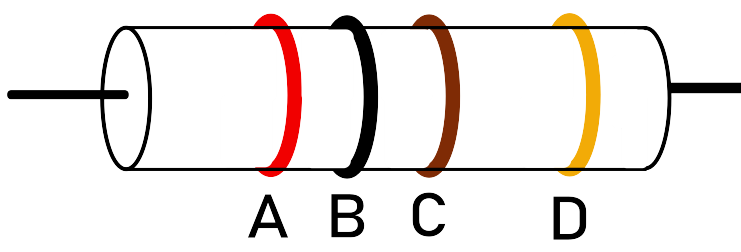Home
Tutorial's
Image collection
Calculator
Projects
MCQ's
3d Models
Invention Hub
How it works
Download Our app
Module 9: Resistor
A resistor is a component that has some value of resistance to oppose the flow of current. The most commonly used resistors in electrical and electronics are carbon resistors, which are made from powdered carbon. Note that the rating of each resistor is based on its size, and bigger resistors have more resistance and are able to dissipate more heat.
9.1 Colour coding of carbon resistor:
A carbon resistor is quite simple to use, and it has a color code on the surface that indicates the value of the resistor. In this scheme, there are generally four color bands (A, B, C,C and D) printed on the body of the resistor, as shown in Fig. The first three colors are bands, which indicate the value of the resistance, and the fourth one tells about tolerance in percentage.

Colour code for Resistance values
Black – 0
Brown – 1
Red – 2
Orange – 3
Yellow – 4
Green – 5
Blue – 6
Violet – 7
Grey – 8
White- 9
Colour Code for Tolerance
Gold ± 5%
Silver ± 10%
No colour ± 20%
The above gives you the resistance values of each color. By using color, we can calculate the resistance value of any carbon resistor. For example, a carbon resistor having a color code of red, black, brown, and gold for A, B, C, and D.
From the above color code, Red has a value of 2, Black has a value of 0, and Brown has a value of 1, then the resistance calculated as AB is side by side and c is the number of zeros; similarly, 200 ohms is the resistance of the above resistor with a tolerance of ±5%
Related articles
